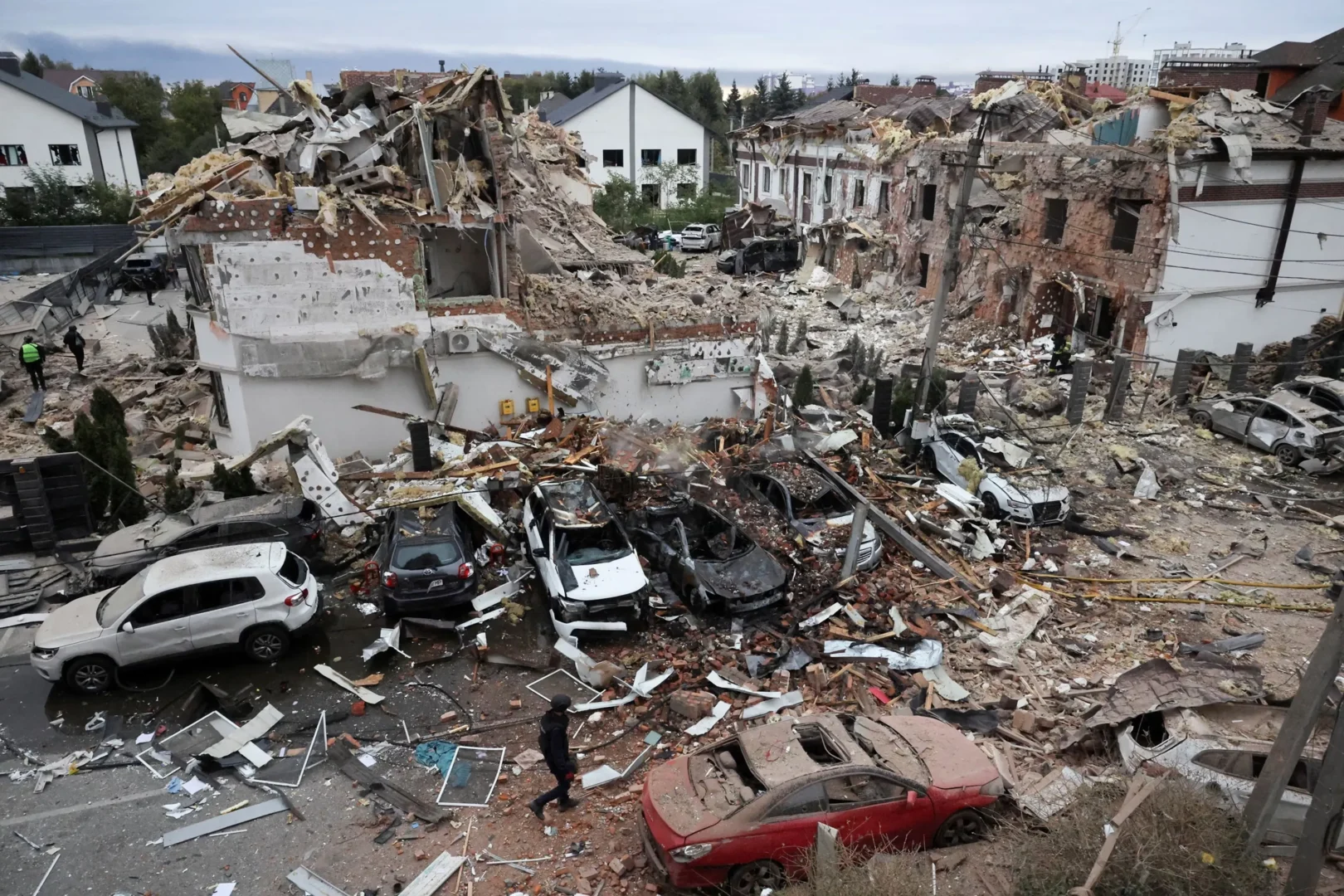KYIV, Ukraine — Ukraine experienced one of its heaviest aerial assaults in recent months this weekend, with a Russian bombardment lasting over 12 hours, resulting in at least four deaths and more than 70 injuries across the country.
President Volodymyr Zelensky confirmed that all four fatalities, including a 12-year-old girl, occurred in the capital, Kyiv, the primary target of the attack.
The barrage involved nearly 600 drones and dozens of missiles aimed at seven regions of Ukraine, representing a significant escalation of hostilities.
Zelensky responded fiercely to the “vile” assault, warning that Ukraine would retaliate and arguing that the attack demonstrated Moscow “wants to continue fighting and killing.”
Russia, conversely, claimed its strikes targeted military facilities and industrial enterprises supporting Ukraine’s armed forces.
Civilian infrastructure hit
The extensive attack, which typically begins late on Saturday evenings and relies on mass drone saturation, caused widespread damage.
Ukraine’s Defence Minister Igor Klymenko reported that at least 100 civilian sites were damaged nationwide, with entire neighborhoods left in ruins.
In Kyiv, emergency services reported that an attack on the Institute of Cardiology resulted in the deaths of both a nurse and a patient.
President Zelensky added that a large bakery, an automobile rubber factory, apartment buildings, and civilian infrastructure were all targeted, with strikes also hitting the Zaporizhzhia, Khmelnytskyi, Sumy, Mykolaiv, Chernihiv, and Odesa regions.
The regional impact was severe in the south and east:
- Zaporizhzhia: Governor Ivan Fedorov confirmed 34 injuries, including three children—two boys aged 11 and 12, and a nine-year-old girl. Both boys were in serious condition after one was caught in an explosion and the other suffered carbon monoxide poisoning.
- Sumy: The regional governor reported the death of a 59-year-old man in strikes over the past day.
Calls for Western action
Vowing that Ukraine “will strike back” in a bid to “force diplomacy” from Russia, President Zelensky said he was counting on a “strong reaction” from European allies and the United States.
He drew a pointed connection between the attack and global affairs: “This dastardly attack took place in fact as the end of the week of the UN General Assembly, and this is how Russia declares its real position,” he said.
Zelensky reiterated his support for US President Donald Trump’s calls for harsher sanctions on Russia and urged European allies to curb their imports of Russian oil and gas.
Also Read: Russia launches massive strikes on Kyiv, undermining Trump’s peace push
Trump recently indicated a shift in his position on the war, suggesting for the first time last week that Ukraine could retake the land it had lost due to the strain on the Russian economy.
NATO scrambles and bolsters defenses
The strikes near the Ukrainian border prompted immediate military action in neighboring NATO countries. Jets were scrambled in Poland early on Sunday as Russia targeted western Ukraine.
The Polish military described the action as preventative, noting such events have become routine since NATO aircraft shot down three Russian drones in Polish airspace earlier in September.
Meanwhile, Denmark’s Defence Ministry confirmed observing drones over military sites for a second consecutive night.
In response to a series of airspace incursions reported by Poland, Estonia, and Romania, NATO is moving to bolster its eastern flank, including enhancing surveillance and stationing at least one air defense frigate in the Baltic Sea.
Despite the escalating tensions, Russian Foreign Minister Sergei Lavrov stated in a speech to the UN General Assembly on Saturday that Russia has no intention of attacking EU or NATO member states, though he warned of a “decisive response” to any “aggression” directed toward Moscow.

